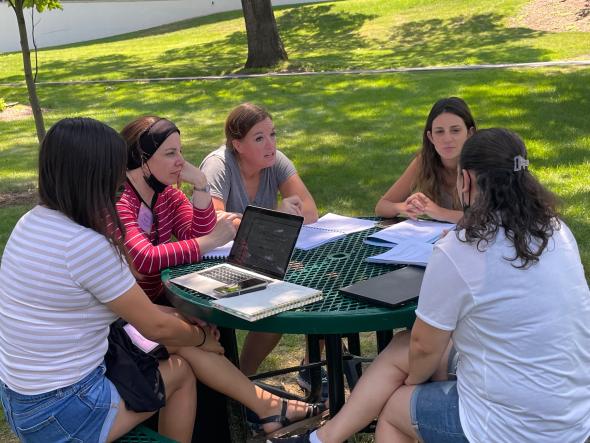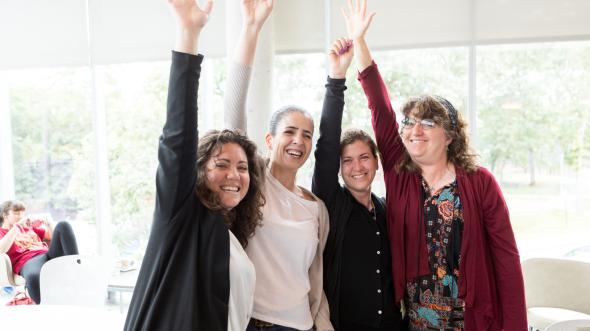The scene is all too familiar: Jewish day schools often rely on traditional hierarchical relationships with respect to teacher roles. An administrative team makes the majority of decisions. Teachers are expected to comply. There are few opportunities for expert teachers to advance in their careers, which handcuffs teacher talent and limits Jewish education from fully realizing its potential to educate children and support them as they develop their Jewish identity.
This hierarchical model can have a negative impact on the professional relationships in a school. Teachers might feel like they don’t have agency in the governance of the school or a say in the decisions that impact them. Often, teachers complain that administrators implement initiatives from the top down, rather than authentic efforts that arise from within the teaching ranks.
Imagine a more collaborative context, in which a group of teachers meets regularly to share and discuss student writing with the goal of strengthening their writing program. The teachers ask probing questions such as, “I wonder what the student intends as the climax?” The group meets to discuss the writing, facilitated by a teacher leader who serves as the school’s writing coordinator. These teachers deepen their professional relationships through supporting and challenging one another in their craft. They elevate the writing program in their school. They find trends that need addressing and bring those issues to the wider teaching community and administration.
Many teachers have so much more to offer; they are hungry for broader roles within the school to grow their leadership skills and improve instructional practices. They love teaching, and they are driven by a deep belief that they can better the field of education from within and beyond the classroom. Imagine what day school education could be like if we created systems in our schools to support teacher leadership and enable this type of critical colleagueship.
I participated in a teacher leadership program at Brandeis University. Together with others in my cohort, we formed bonds based on our mutual passion for leadership from within the craft. We leaned into the organizational structures of schools, examined their micropolitics, and evaluated types of authority and their effects on collegial relationships. We worked within our schools to develop and implement change initiatives. We designed professional development that promoted “co-thinking” among the staff, in which coaching and mentoring are based on thoughtful analysis of problems of practice—not simply offering tips and advice. We discovered that school improvement often requires wholesale shifts in the culture of a school.
Making a successful cultural shift depends, in part, on teacher leaders. Teacher leaders have their boots in the classrooms and on teams. They live and breathe the day-to-day operations of classroom teaching. They work hard to develop relationships with their colleagues that move beyond congeniality; their work depends on the relationships they develop, which involve supporting, challenging, observation, mentorship and examining issues of practice.







